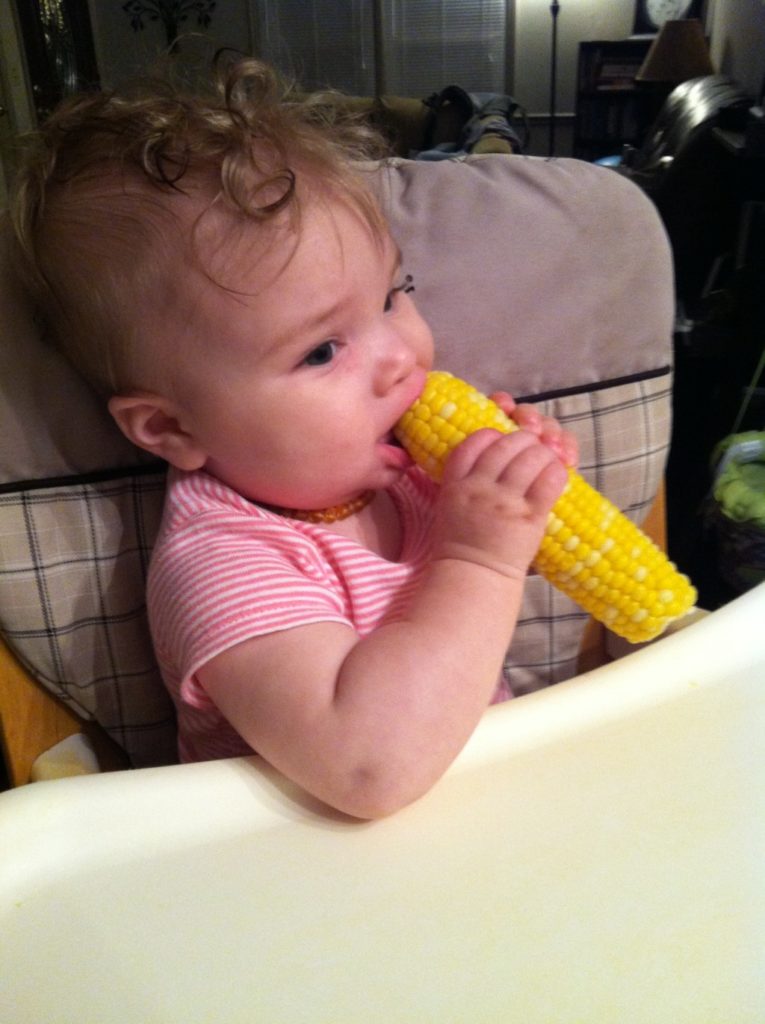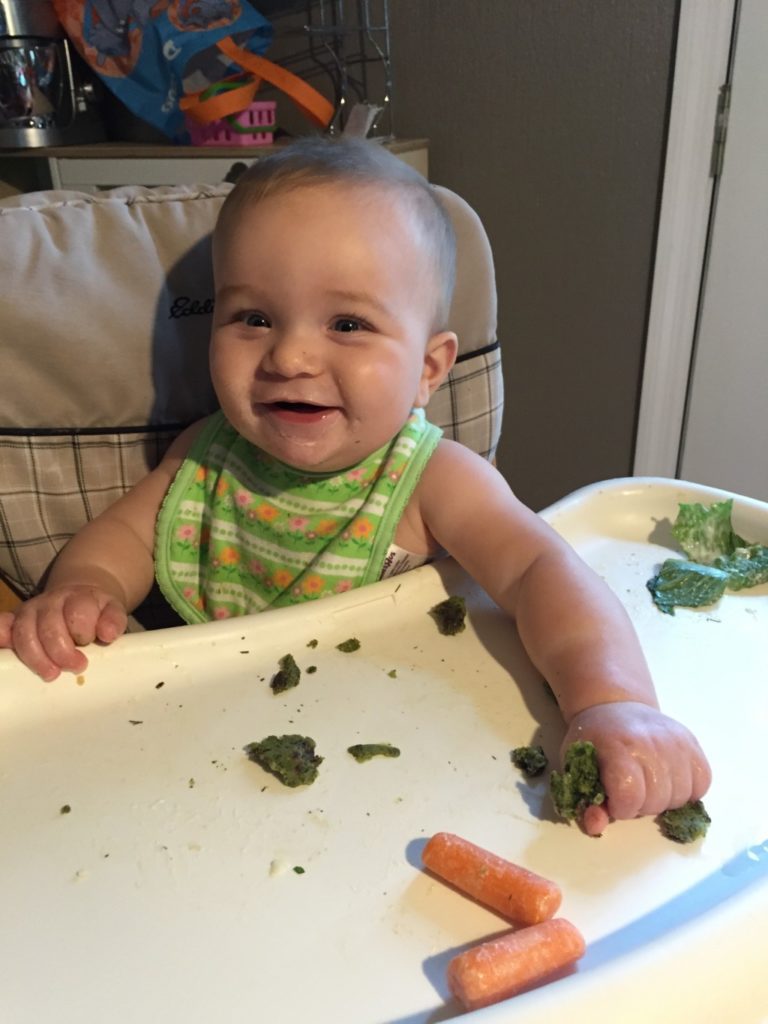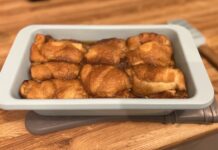I first heard about baby-led weaning, or BLW as it’s known in mom circles, when I was looking into starting solids with our daughter and deciding when and how we wanted to begin. I didn’t know anyone personally who was doing it so I began my research online. The idea began to gain popularity with parents with the publication of the book, Baby-Led Weaning: The Essential Guide to Introducing Solid Foods and Helping Your Baby to Grow Up a Happy and Confident Eater by Gill Rapley and Tracey Murkett. The book is available at the Knox County Library and through Amazon. Reading the book was very informative and encouraging, and after about ten pages, I knew it was what I wanted to do with our daughter.
I’d been dreading starting solids and wondering if it was going to be just one more thing to struggle with forcing her to do (sleep, baths, medicine…need I go on?) but after reading the book, I couldn’t wait for her to turn six months to start!
The book explains the theories behind BLW in more depth, but the basic premise is that before pureed baby food was put on the market, babies were eating the same foods as everyone else at the family table without modifications. In the 1950s, more women began working outside the home and returning to work sooner after having babies. Parents started pureeing food and spooning it into their babies’ mouths at 3-4 months because they wanted to fill babies’ tummies to help them sleep better at night. It is a myth common to this day that fuller babies sleep longer. Most of the research suggests that babies’ stomachs aren’t capable of processing solid foods this early. Both the American Academy of Pediatrics and the CDC now recommend waiting to begin introducing solid foods until six months. Once a baby is six months, is sitting upright and is capable of grasping objects, there isn’t any reason they can’t just eat what the rest of the family is eating.
The most frequent response I got when sharing the tenets of BLW with friends and family was concern over my daughter choking on the solid food we were giving her.
One of the most interesting things about BLW is that it teaches babies to chew first instead of teaching them to swallow automatically like spoon-feeding does. This actually makes a BLW baby less likely to choke than a spoon-fed baby when they start finger foods. Also, in reading up on this method, I learned that a baby’s gag reflex is in the center of his or her tongue instead of the back like an adult’s. So if they get too much food or too big a piece, they actually gag it up before it’s even close to going down their throats. As they grow, it moves back on their tongue.
Another thing we love about BLW after having used it with two children is how willing our kids are to try new foods.
Allowing babies to feed themselves from day one puts them in control of what goes into their mouth and so eliminates any power struggle. Babies are more likely to be adventurous with what they’ll try when they feel like they are in control of what goes in their mouth instead of having it thrust in with a spoon before they even know if they like it or not!
To put BLW into practice all you do is begin putting some of what you are eating on baby’s tray when they are old enough to sit up and are showing some interest in food. The book recommends cutting foods into “finger” type shapes, long and rectangular. These are easiest for babies to pick up before they develop the pincer grip. They can eat anything you do, keeping in mind that they shouldn’t have much sodium (no more than 400mg a day until they are one) and not much sugar.
It will be slow going at first and baby may go through cycles of being really interested and then not at all. It will take almost three months for them to master getting it to their mouth, biting some off, chewing and swallowing. We started with our daughter when she was six months and around eight months I was beginning to wonder if she was ever going to start eating any real amount. But then sure enough, right around nine months, I could tell from her diapers that she was starting to ingest quite a bit. Babies should continue to have breastmilk or formula on the same schedule they had before starting solids until it’s obvious they are ingesting a significant amount of solid food. Below are a few ideas for what to feed babies at each meal, but a lot of it will depend on what your family likes to eat. There are also several awesome Instagram accounts to follow which post daily examples of the BLW meals they are feeding their kiddos!
Breakfast
- whole strawberries, with stems removed
- toast spread with mashed fruits or veggies (bananas, avocados, sweet potatoes, applesauce) and cut into strips
- omelets filled with chopped spinach and cut into strips
- French toast, waffles, or pancakes cut into strips and spread with yogurt
- homemade or store-bought cereal bars
- oatmeal made thick and spooned onto the plate in blobs
Lunch
- slices of fresh fruit (apples, peaches, bananas)
- raw veggies cut into sticks (carrots, cucumber, celery)
- cheese sticks
- low sugar muffins or bagels spread with nut butter
Dinner
- chicken, pork chop, steak or pot roast strips
- long thin strips of roasted veggies (red pepper, onions, sweet potatoes, asparagus)
- avocado slices
- pasta with marinara sauce
- pizza cut into strips
- quesadillas with cheese and mashed beans spread with guacamole
And that’s it! No food to steam or puree. No jarred baby food to buy. No struggling to shovel food in their mouth or making airplane noises to coax it in. No traveling with spoons and pureed foods or bringing it to restaurants. I love the simplicity of this method of introducing solids and really believe it has encouraged my kids to be more diverse and adventurous eaters.






















